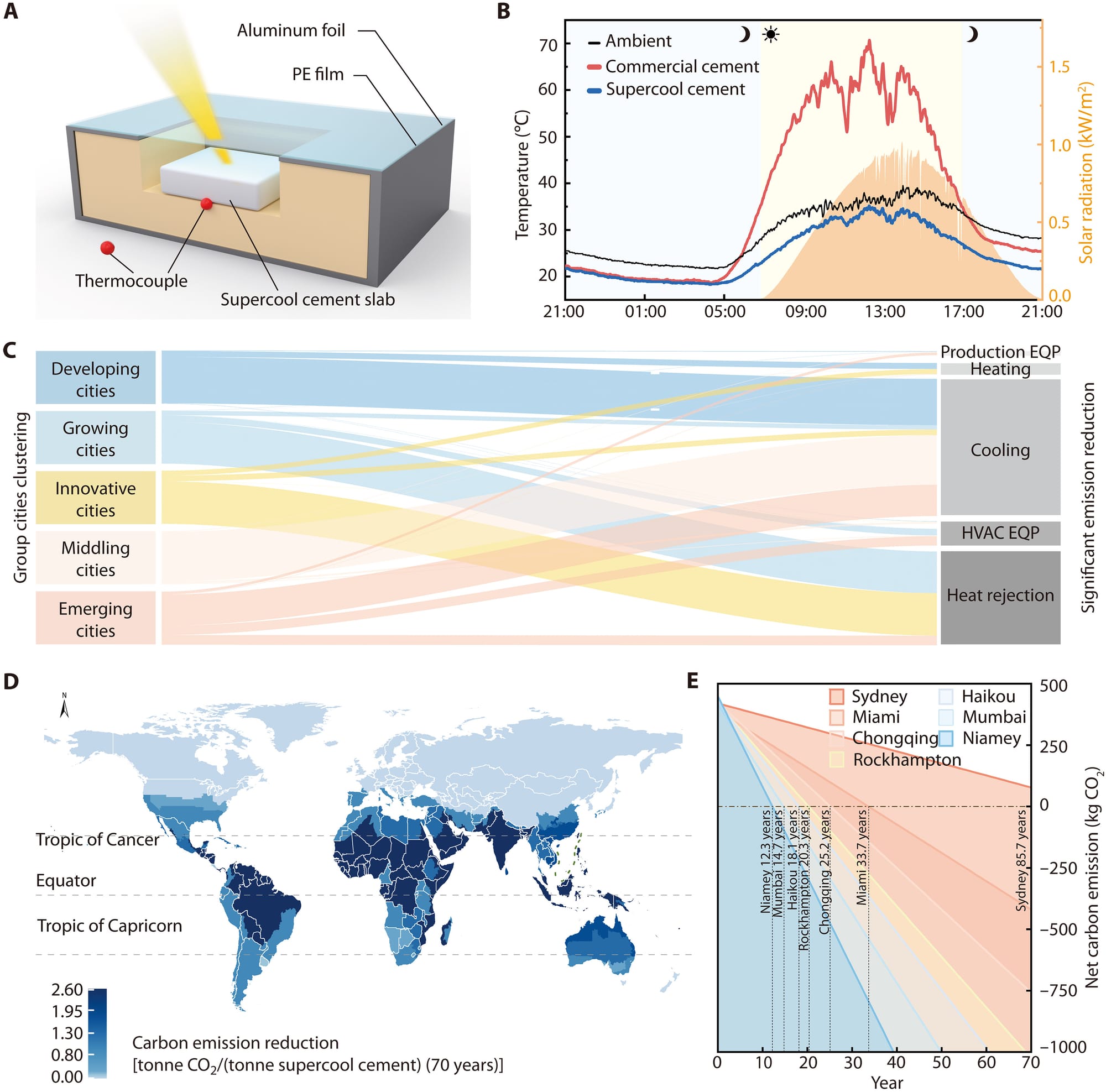Cooler Cement
Changing the surface microstructure of cement reduces concrete's contribution to global warming by keeping structures cooler

One of our favourite quotations is from Jared Diamond’s book Guns, Germs and Steel, ''We tend to seek easy, single factor explanations of success. For most important things, though, success actually requires avoiding many separate possible causes of failure."
If we seem to publish a lot of articles on the technical aspects of climate change and their solutions, it’s with good reason. The specifics of technology matter. The continued functioning of modern civilization is dependent on a myriad of complex, intertwined technologies, most of which contribute something to climate change. Finding non-climate-change-aggravating alternatives will be just as complex, and will require many small steps in many technologies to eliminate those causes of climate change failure.
One such required technological change is developing greener cement. We have written before about greener alternatives to manufacturing cement1, but not about how cement, once embedded in concrete structures, contributes to global warming, and how a change might help alleviate the problem.
The problem with cured concrete is its low albedo. Albedo is a measure of how much incoming solar radiation is reflected back into space (1 = all radiation reflected, 0= all radiation absorbed) and cement accounts for most of the albedo of concrete. Concrete albedo varies between 0.4 to 0.6 when new, but much worse when old and dirty. This is generally lower than the albedo of the land covered by the concrete, meaning that much of incoming solar radiation is absorbed by concrete in roads, bridges, buildings, and other structures.
There are two ways in which incoming solar radiation absorbed by concrete contributes to global warming. One is direct, when the absorbed radiation is released back into the atmosphere as long wave radiation, where the atmosphere absorbs it and raises global temperatures. The second is indirect, when that incoming radiation absorbed by exposed concrete in buildings heats the concrete, which increases the heat transferred to the interior of the buildings, which requires more air conditioning (A/C), which increases the energy to run the A/C, and which increases the GHGs used to produce the electricity to run the A/C, indirectly worsening global warming.
A team of researchers associated with Southeast University, Nanjing, China, have developed a new type of cement that has additional “self-assembled reflective crystals on light-interactive surfaces”. This results in a much higher albedo than ordinary Portland cement, 0.96, and increased emissivity, 0.96, in specific parts of the long-wave radiation part of the spectrum.2

This new cement reduces the global warming that results from cured concrete in two ways.
Concrete made with the cement has a higher albedo when new, meaning more incoming solar radiation is reflected directly back into space and less is absorbed. Less absorbed radiation means less heating of the concrete, and less heat transferred into buildings.
The warmed concrete emits more heat than regular concrete in the “atmospheric window” of the infrared, long-wave part of the spectrum that allows radiation to escape directly to space (for more on how this works, see our earlier story on the greenhouse effect3). Simply, it heats up the atmosphere less.
Will this novel cement solve global warming on its own? Of course not, but, as concrete is one of the key materials that hold up civilization, literally, innovations like this will be a part of the overall solution.
Reading:
- Sweet Lightning. “A New Way of Making Low-Carbon Cement.” September 9, 2025. https://www.sweetlightning.eco/one-new-way-of-making-low-carbon-cement
- Lu, Guo, Fengyin Du, Zhen Wang, et al. “Scalable Metasurface-Enhanced Supercool Cement.” Science Advances 11, no. 34 (2025): eadv2820. https://doi.org/10.1126/sciadv.adv2820.
- Sweet Lightning. “The Greenhouse Gas No One Talks About.” August 21, 2025. https://www.sweetlightning.eco/the-greenhouse-gas-no-one-talks-about/.